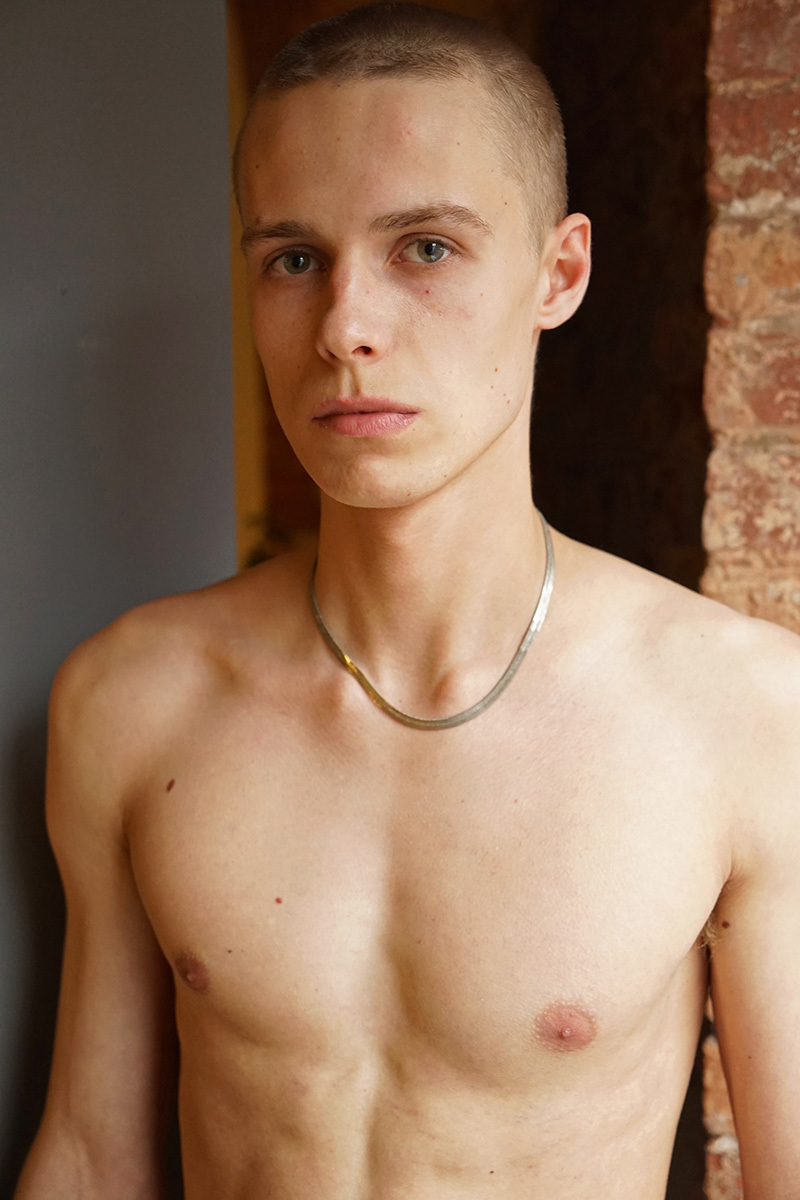Workers of the world, unite! For seven decades, the communist chant served as state motto for a Soviet Union paved with good intentions that ultimately wouldn’t last. And yet, if Lenin had lived to see the Gosha Rubchinskiy show in Kaliningrad on one snowy day in January this year, it would have warmed his Marxist heart. In the remote Russian enclave nestled on the Baltic coast between Poland and Lithuania, the cult designer has united his tribe of young bright Muscovites in their most personal venture to date. “If you think about Russia you think about politics. It’s more interesting for me to invite you here and show you what Russia is, rather than showing you in Paris,” the 32-year-old reflects over a club sandwich in Kaliningrad’s Radisson hotel, hours after his fall/winter 17 show. Downstairs, the five young Russians who make up Gosha’s gang are toasting the success of the show they all worked on, a culmination of the artistic energy that’s been mounting between these young men over the past years. Together, they’ve created a fashion movement in the nostalgic spirit of the Russia they love. One that’s generally overshadowed by Western media coverage of the politics to which Gosha refers.
Sure enough, as we land in the retro surroundings of Kaliningrad’s airport where dutiful domestic tourists can buy their very own portrait of President Putin in amber mosaic, news breaks that NATO is sending troops to the enclave’s Polish border amidst Russia’s deployment of nuclear-capable missiles there in November. Conscious of Putin’s sudden annexation of Ukraine’s Crimea region in 2014, Lithuania is now planning a fence on its side of the Kaliningrad border, too, the BBC app informs us. “Gosha is the only person who portrays the positive side of Russia,” says Valentin Fufaev, a 17-year-old artist from Moscow with eyes you can get lost in. He’s known the designer since messaging him on Instagram two years ago and becoming one of his models. A talented painter, Valentin last year launched his own fashion line, DOUBLECHEESEBURGERVF, at Dover Street Market—”presented by Gosha” as it is billed by the store, whose parent company, Comme des Garçons, backs Rubchinskiy’s brand. “It’s painful to even mention politics today, and we shouldn’t talk about it. I don’t watch CNN or the BBC or Russian news, because I think politics is the lowest form of art nowadays,” Valentin asserts.
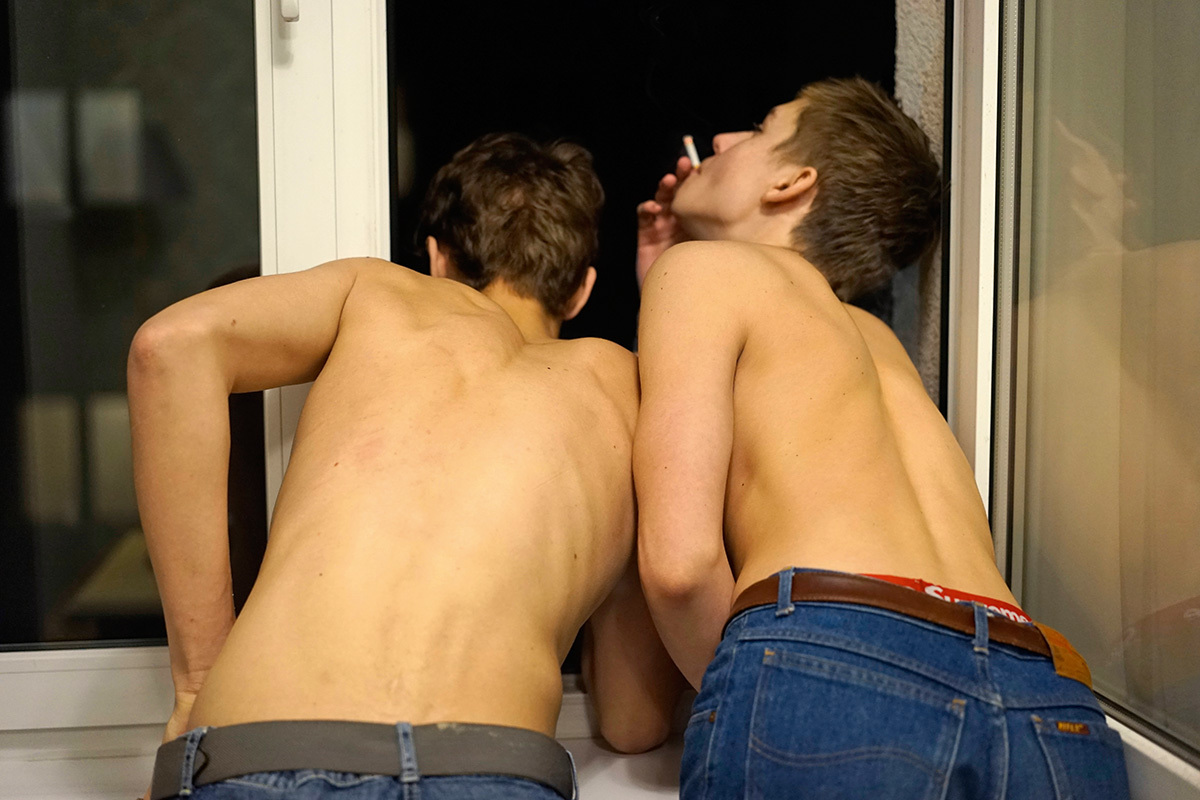
“Russian teenagers are feeling energetic, they’re growing up with Gosha and feeling the mood, and trying to be part of it,” he continues. There’s a British twang to Valentin’s accent thanks to the international school he attends in Moscow, which he’s about to graduate from this summer—much to his delight. His classmates don’t belong to Gosha’s fashion-forward teenage following. “They think I’m crazy. We’ve got, like, bipolar disorder between each other. They’re into some other shit, but it’s uncool in my opinion,” he declares, noting he’s hoping to do Fine Arts at Central Saint Martins. In Gosha, it would seem, his following finds not only a common desire for a more romantic view of their Russian homeland, but an escape from it, too. And here they are, the lucky few, who get to be by his side, transported to the ghost town of Kaliningrad to stage his football-inspired fashion show—a nod to the upcoming Russian-hosted World Cup, which will partly take place in the Baltic province. “I like things that can unite people: music or football or fashion,” Gosha says. “I think there’s good reason to see places with your own eyes and not on the internet or newspapers. For me, it’s my mission. I’m Russian and I have a voice. I can speak about my country and invite my friends from international press here.”
Gosha, much like Mother Russia, will find no better ambassadors than his crew. They talk about him with a kind of devotion unprecedented for boys in their late teens and twenties. “No man or woman has as deep and huge an influence on me as Gosha. Everything he says to me, I understand that this is how it needs to be,” gushes Artem Nanushyan, a doe-eyed artist and musician with a shaven head, who helped style the show in Kaliningrad. He first met Gosha at a rave in Moscow in 2015. “After ten minutes he was taking pictures of me. We talked for maybe two hours, discussing our views on life, art, everything. We went really deep,” Artem recalls. “He said, ‘Oh man, I am so excited, so happy! This is the generation I was waiting for.'” Ivan Shemyakin, a 23-year-old ivory-skinned skater who’s recently returned from army conscription in Siberia, says Gosha “can try anything and it will always be beautiful.” It’s not your typical soundbite from a bunch of skater boys, but as Gosha says, in the royal we, “It’s not random teenagers. It’s Gosha’s team.” He credits their earnest and poetic characters to Slavic tradition. “Maybe it’s more about Russian people than about these kids, because if you read Dostoyevsky or Tolstoy it’s very natural to think about conception and a romantic nostalgia, feelings and a philosophical way of life.”

In the smoking area at the official party in the evening — thrown in Kaliningrad’s unrivalled hotspot, the Atlantika — their banter isn’t about hot girls or hot boys or whatever you’d expect from tipsy young men. In fact it isn’t banter at all. These boys converse, about life and love and the Russian situation. “Yeah, I talk about sex,” Artem shrugs back at the hotel. “I started talking about sex maybe two years ago because I understood that I’m male and I need to talk about this shit with my bros. But feelings and art are the most interesting discussions for me and the other guys. They’re things that are true and really need to be discussed.” He composed a spoken soundtrack for Gosha’s show comprised of the real recordings of each model that walked it, answering questions about their realities and dreams, in Russian. “My name is Valentin Fufaev. I’m 17. I was born and live in Moscow. I study, draw, create. I don’t just exist, I live,” was one. “My name is Rodion. I’m 17 years old. I was born and live in Krasnoyarsk in Siberia. I write poetry and hope one day it will change people’s view of the world,” was another. Sixteen-year-old Leon delivered the angst any teenager can relate to: “I’m no one and I don’t know when I’ll become someone. My dream is to not die before I’m 25.”
And then there was the Russian awareness key to Gosha’s movement. “My dream is a society without violence and oppression,” said 22-year-old Tyoma from Vologda. “When I look at people through the viewfinder,” reflected a 19-year-old photography student from Moscow also named Ivan, “I mostly see they are tired from living. I want to see Russians happy and free one day.” For Gosha’s teenage believers born in the 90s, the bleak decade that followed the dissolution of the Soviet Union in 1991 is mostly the stuff of legend. “I don’t remember the bad things because I was a kid, but my mother and grandmother told me the stories; people were always hungry, they didn’t have money, they had to get tickets for food,” says Ivan Shemyakin, the skater boy who met Gosha three years ago and is now part of the crew behind PACCBET, the skateboard line designed by Rubchinskiy and skater pro Tolia Titaev. “This generation of people — Gosha’s team — are people from the 90s, a really hard time for Russians,” he continues. “And maybe it helps us understand this world. We have a different angle.” For Gosha himself, 32 and older than his friends, the 90s stand as a clear memory of his childhood and early teenage years. The austerity of those years has become his biggest inspiration: nostalgia from a post-modern make-do and mend era, which created a sportswear-centric street style unique to 90s Muscovite youth.
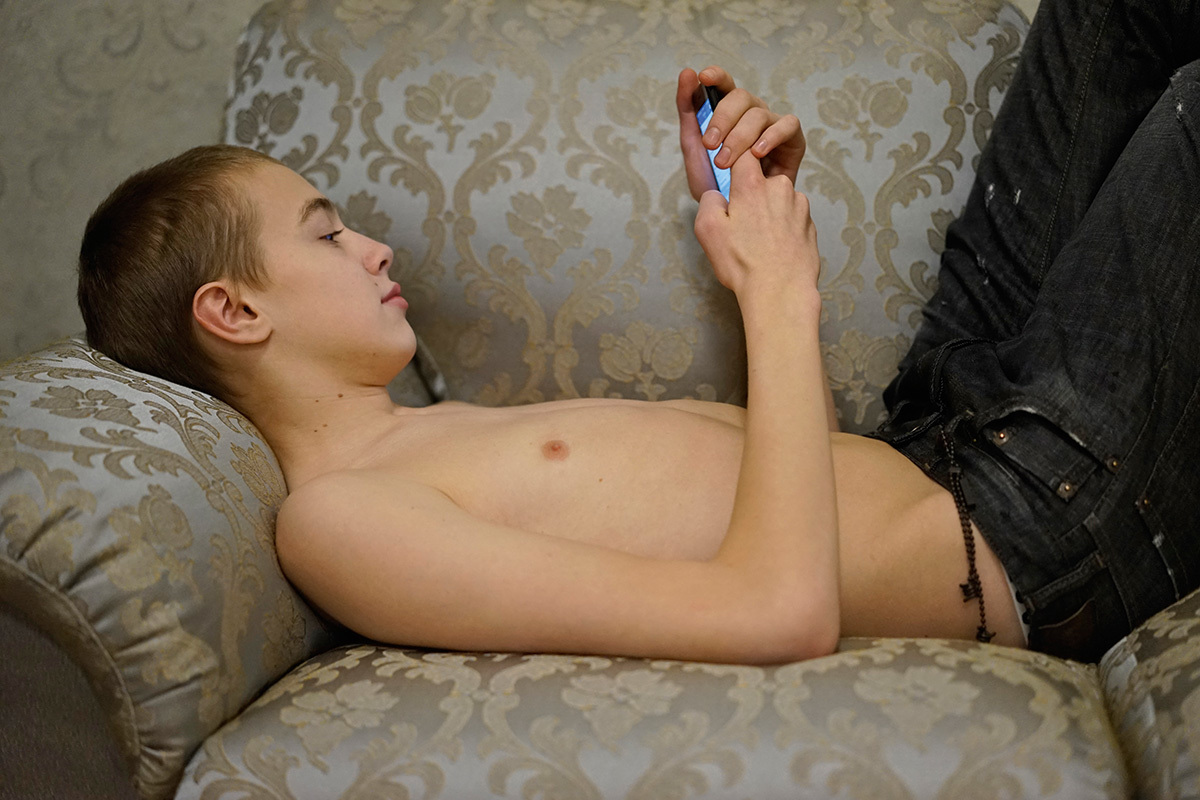
They are memories twisted, turned, and often romanticized through the lens of his collections and photography. (A man of many talents, Gosha refers to himself as an “image-maker,” not a designer.) “I just want to show my point of view. I don’t want to teach people, I only want to show them what I like. If you like it we can share,” he says, trying to explain his Russian fixation. He’s been adamant his references do not represent a political agenda, but instead a reflection of the times we live in. When he took his show to Florence in June 2016, he chose a dilapidated Mussolini-era factory to present it in, explaining its fascist monumentalism reminded him of architecture from the same time in Russia and Germany. “When I first came here it felt like home. Something comfortable for my eyes and my spirit,” he said back then. “But at the same time it’s about paying attention to how it was in the time of fascism. You need to remember your history.” He compared his motives to those of Italian director Pier Paolo Pasolini in the controversial film Salò, which he was murdered for in 1975. “I ask, what is Europe now? What is Italy now? What is Russia now? I don’t want to answer. I only pose a question. It’s ideas on the map and I’ll only pay attention to what’s happening now—what’s in the air. People can decide what they like and don’t like.”
Against the desolate backdrop of Kaliningrad, haunted by Europe’s war-torn past, those questions ask themselves. An originally German territory known as Königsberg since the 13th century, it was occupied by the Soviets after World War II, and although heavily bombed, the city’s architecture still shows signs of Kaliningrad’s Prussian origins—even if the distinct part-practical, part-monumental Soviet touch now gives you more of an early 80s Christiane F. vibe. Bathed in the icy daylight illuminating the 1875 hall of the former Königsberg Stock Exchange on the bank of the frosty Pregolya River, the show has the unmistakable whiff of impoverished teen spirit that always hangs in the air around Gosha Rubchinskiy: granddad tailoring that could have come from a post-Soviet thrift shop, football scarves featuring his Cyrillic Гоша Рубчинский logo, and an Adidas collaboration in time for the World Cup. “I wanted to mix the cultures of English football fans and German sportswear and Russian skate kids all together,” he explains. “This is the perfect place to present a collaboration between a German brand and a Russian brand.” It’s a cross-cultural amalgamation that defines his work. Raised in Moscow in those dreary post-Soviet 90s pining for global influences and access, as a 14-year-old in 1996, Gosha came across a Russian magazine with fashion shoots and translations from i-D and The Face.
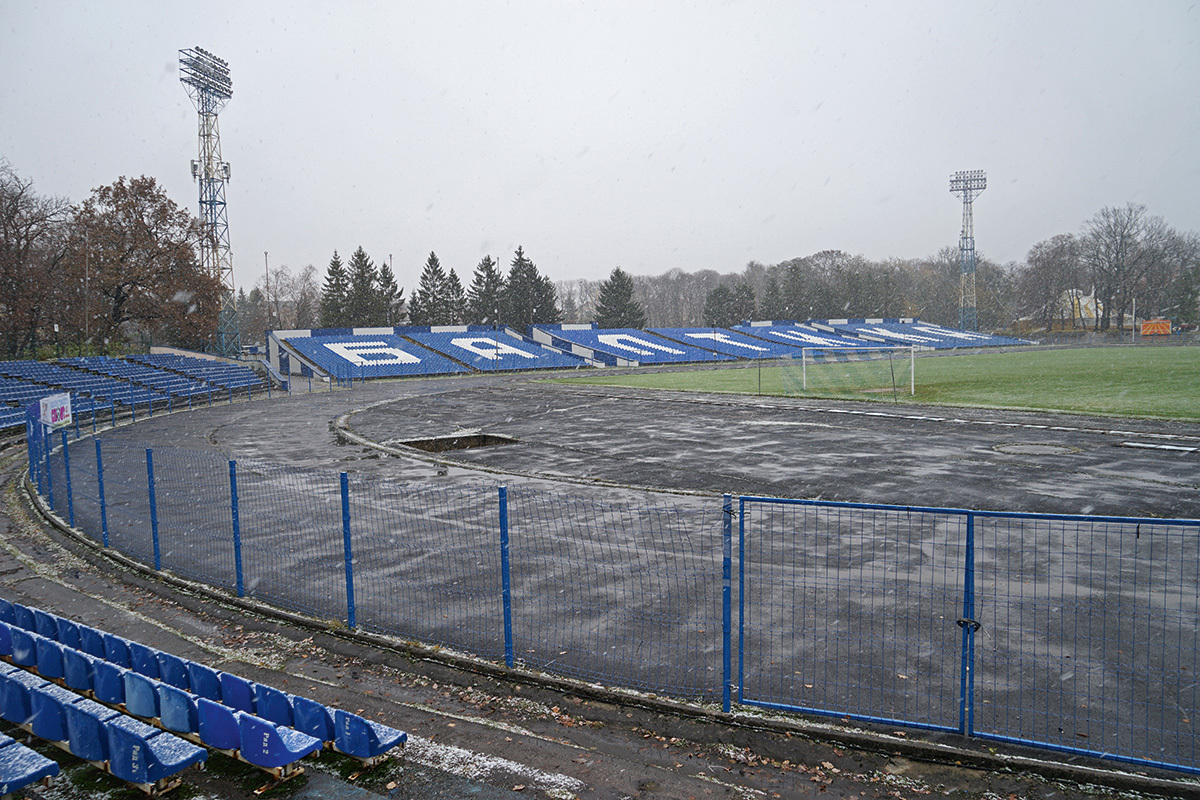

What he saw was the eye-opening foundation for the career that followed: processing a Russia of skater youth culture unknown to the Western fashion world through the industry’s high-polish press. It eventually led to the creation of his brand in 2008, now supported by Adrian Joffe, President of Comme des Garçons and Dover Street Market, who backs the brand as well as the lines launched by Gosha’s gang under the Rubchinskiy umbrella. One is PACCBET fronted by Tolia Titaev, a 22-year-old pro skater who joins us in Kaliningrad. He met Gosha in a casting for his debut show when he was just thirteen and has walked almost all the designer’s shows since, witnessing the evolution of the brand and the popularization of the Russian skater culture that inspires it. “Before, not too many people from the skateboarding communities would come to Russia. Now everyone wants to go there,” Tolia says. “Everyone is trying to copy it, like the cut of the jeans and painting the shoes—it was our thing.” Otherworldly as it is, Kaliningrad doesn’t intrinsically possess the same street cred as Moscow, even if Gosha has printed a typically immaculate guide for his guests here featuring brutalist photography of the city’s main attractions.
“The architecture is sick, but the city was completely destroyed after the war so it doesn’t have many historical buildings—so for Russians, no one goes on vacation here,” explains Pavel Milyakov, who works on prints and soundtracks for Gosha. Raised in Moscow, he’s lived in both Berlin and Barcelona. “A lot of my friends who are designers or musicians moved to Berlin because it’s easier to live there. You have more opportunities to get cash and more possibilities. In Moscow it’s harder, but I just can’t live anywhere else. I just can’t live without this Russian feeling: lots of snow and shit. It makes me stronger in a way. Moscow has the shittiest weather and all these grey building blocks. They have these blocks in Berlin, but in Moscow the feeling is harder,” Pavel pauses, contemplating. “Maybe I just feel a lot.” He credits that sensibility to the same 90s zeitgeist all of Gosha’s friends keep going back to: what Pavel refers to as a Soviet “cage of rules” until “freedom came.” While Gosha approaches the subject with political vagueness, the group’s romantic view of the period is unmistakable. “Now we are in a time when we should rethink what the Soviet Union was,” Ivan argues.
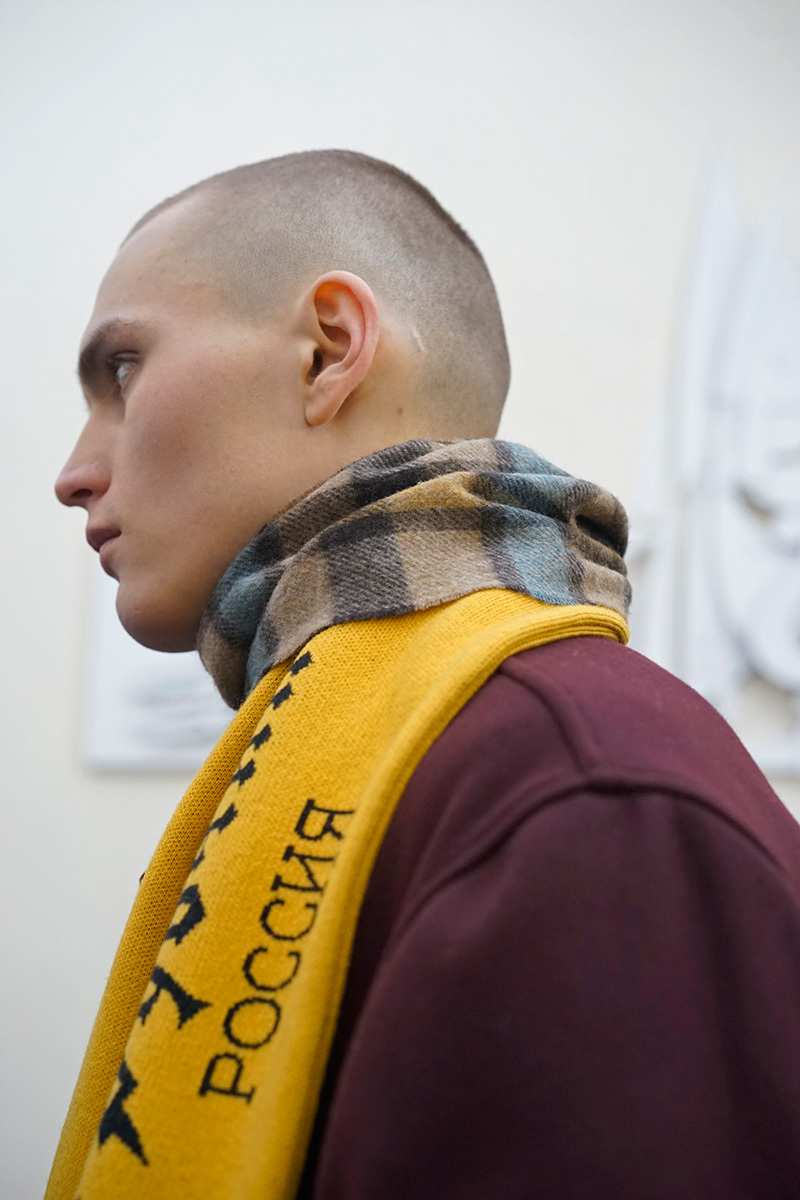
“At the end of it in the 90s, we thought it was all bad — the communism, the leaders, the ideology — but we really forget what was good about it. It was a beautiful culture, a beautiful people, a beautiful thing. We should try to rethink it, try to recognize it from a new angle.” They’re perhaps big words for a 23-year-old skater boy, but such is the way of the young masculinity empowered by Gosha’s approach to life. As Artem notes, “In this world there are a lot of very old and stupid people. And some guys are so smart and interesting, like you wouldn’t imagine, and they’re 15 years old.” Surrounded by the backstage abundance of adolescent Russian skater boys at Gosha’s show, with their strong Slavic noses and chins, shaven heads and puppy eyes, you can’t help but notice the modelesque beauty that goes with the brains of this movement. Asked how he selects the boys, who walk his shows and often end up becoming friends like Artem, Ivan, Pavel, Tolia, and Valentin, Gosha says it’s about sensitivity: “If I feel something special I choose the person. It’s not about having beauty. You need to have something else to be part of Gosha’s show.”
Credits
Text Anders Christian Madsen
Photography Gosha Rubchinsky
